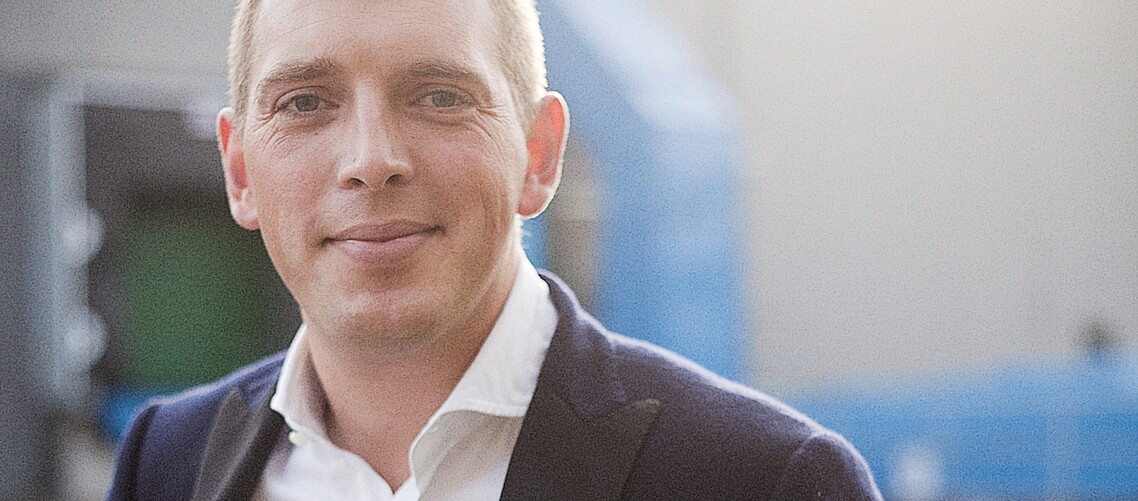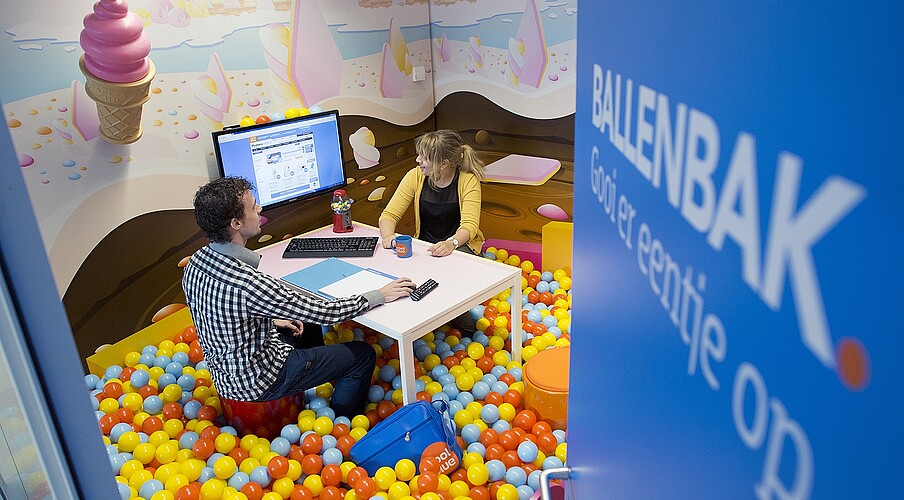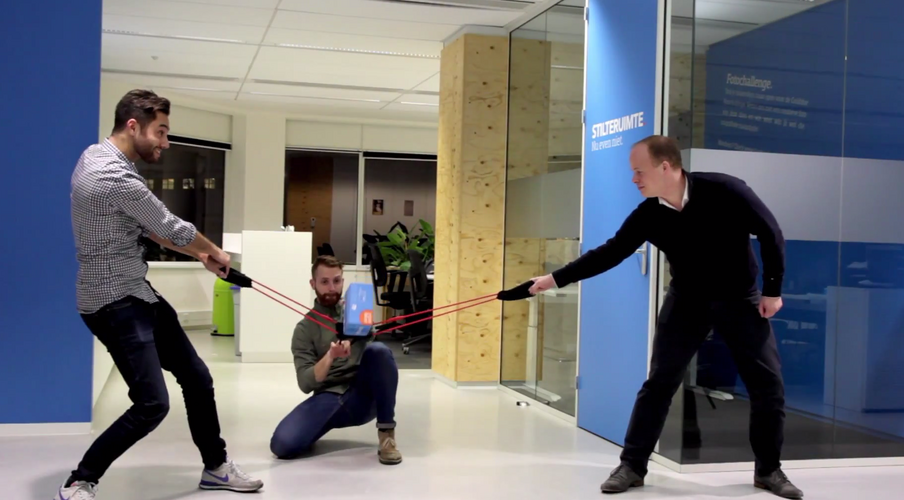Story by Russel Gilbert
Russell Gilbert: You started Coolblue with friends Paul de Jong and Bart Kuijpers in 1999. The company now has 323 web shops serving Belgium and the Netherlands, seven physical stores and in 2014 achieved a turnover of €360m. To what do you attribute this success?
Pieter Zwart: It all depends on how you define success and what you set as goals for yourself. For Coolblue, success is two-fold. The first goal is making money. The second is to serve as a role model for other companies in the realm of customer-centric entrepreneurship.
Sometimes these goals can interact in really positive ways. At other times they can be counter-intuitive. For example, being customer-centric isn’t the most economically viable approach in the short term. If you’re obsessed about your customers as we are, making them happy, or better still, going beyond their expectations, there are a lot of costs involved.
If you can surpass their expectations then your customers will become loyal enthusiasts. This is what we focus on – turning customers into fans. It’s something we measure very closely using a Net Promoter Score (NPS).
This is how our brand and our company culture have been built. It’s an approach that today gives us a NPS of 65, which is incredibly high and means that most of our customers are fans; they actively promote us to their friends and family. In fact, we ask them to promote us and give them an experience that means they’re happy to do so.
The company slogan Alles voor een glimlach (Anything for a smile) is very personal. It’s about something that comes from within the individual.
Precisely. It’s very emotional. What we do is actually very unemotional. We offer potential customers a very rational approach to help with their buying intentions. We can’t make you want a product, but given that you do want something, a camera, say, and look online for advice or a specialist outlet then you’ll find camerashop.nl. And what is that? It’s nothing more or less than camera Valhalla.
We have no preference about which camera you buy, just as long as you buy it at camerashop.nl. For that to happen we need to incentivise. So, shipping is free. Order before midnight and get it the very next day, even on a Sunday. Same-day delivery is also possible. Customers won’t find better shipping deals anywhere else.
The real satisfaction driver is: how are we able to help you make the right choice? The right choice is defined as the one that makes you happiest. That comes about by offering supreme content at the product level and providing the information and advice you need to know before you buy relative to your unique needs. That means pointing out the cons of a product as well as the pros. In addition to the information in our web shops, customers can go to our physical stores to see and touch the products and talk to specialists who can also give them the advice they need.
We offer 24/7 telephone support, and we’re available to help up till midnight every day through channels such as WhatsApp, Facebook and YouTube. We’re there for customers in ways that suit them best. It means we empower customers to make the choices they’re happiest with.
The end result is that more often than not the customer makes the purchase. And we can prove that people who bought from us are more satisfied than people who bought elsewhere. The quality of the experience also helps reduce the rate of returns. This approach is a persuasive argument for suppliers. We’ve proved to them that the NPS philosophy driving our success can drive theirs as well.
Is it fair to say then that the success of Coolblue is very much based on holding your customer’s hand every step of the way and in developing processes that work around their needs rather than those of the organisation, and that aligned to that is a very powerful sense of integrity?
Exactly. And it’s measurable integrity rather than some vague corporate vision. The key here is that we measure everything – at a product, vendor, channel, customer level and so on. Our Business Intelligence team is probably bigger than those of all the major retailers in the Netherlands combined. What we see is that we add value through the satisfaction of our customers. There’s long-term value for us in making people happy, and achieving that is the fun part.
Coolblue is a privately owned company. In fact, it’s probably one of the biggest – if not the biggest – privately owned internet companies in Europe. That means we can build the company we want. As I mentioned earlier, there are costs in the short term in being so customer-centric, but over the long term it’s a really strong business driver. If you outperform your competitors with customer NPS scores, you’ll outperform them in terms of growth and profitability. That’s exactly what we see.
The Coolblue recruitment website mentions friendship as being an essential part of the company’s culture. With 1,000 employees how is that possible and how do you maintain it?
Friendship is at the heart of everything we do. Paul, Bart and I are still friends. We’re like a family-owned business, with the difference being that we’re a friends-owned business. This underpins how we interact with our customers – we want to make them smile. It’s also how we like to interact with each other, with honesty and directness. They’re traits you expect from your friends. And whether it’s through our product ratings and reviews or how we interact with them, customers love openness and directness when it’s done with integrity.
As to how we maintain this culture, it all starts with hiring the right people. We want people who are prepared to emotionally invest in Coolblue: people who don’t differentiate between colleagues and friends. Everyone’s different, of course, but if you can’t see your co-workers as friends then you’re not the right person for us.
Working with friends makes work easier. There’s less conflict of egos and it makes for a very safe environment, especially for young people who might be having their first experiences in the world of business. Equally, it’s a safe place for those who might be coaching or teaching young people for the first time.
With good friends you can be honest and speak your mind without there being any bad feelings. You might not like what they’ve got to say, but you respect their views; you respect their friendship, so you listen and take note.
I also believe that most of us have fewer friends than we’d like. I’ve never met anyone who thinks they have too many real friends. So, why not build a company around that idea? Friendship is a big driver of happiness.
Getting this emotional buy-in from people must make for a very trusting and creative workplace.
And you need a safe and friendly environment for that to happen, an environment where people are encouraged to come up with crazy thoughts and new ideas about what we do and how we do it.
Having the right business drivers is a strong influence on the company culture. Profit isn’t a business driver; it’s a result. Sure, there are drivers like online traffic and conversions, but what drives those? You have to keep looking deeper, keep breaking it down until you find the core drivers, and you must give people responsibility for them.
For us it’s customer retention and satisfaction, so we give people this responsibility. We let them think for themselves and encourage them to do whatever it takes to make the customer happy.
Sometimes when people start working for us they feel uncomfortable at being given this level of direct responsibility. They find it unusual. In reality what’s unusual is that other companies find it strange that employees should be given the autonomy to think and make decisions for themselves.
Traditional management structures work on the basis of fear and mistrust. By empowering people, and not implementing internal processes and precautions to continually check up on them, we’ve saved a considerable amount of money, so there’s actually a very strong business case that supports what we do.
It also means that our people don’t have bosses breathing down their necks and giving them pressure. It’s a very safe position to be in and that safety is very scalable. In a sense it’s one of the reasons why comparing Coolblue with a family business holds true. There are no annual reports or quarterly updates to make where shareholder expectations need to be met or justifications need to be given about why the business might be two per cent down for three quarters in a row, or whatever the case might be. These concerns aren’t relevant to the entrepreneur when they have the bigger picture in mind.
With traditional retailers such as V&D in serious financial trouble, what future do you see for bricks-and-mortar retailers?
In the main, high street retailers have failed to respond to the trends in consumer behaviour that we could all see happening. Traditional retailers are stuck in old ways of doing business and measure performance by the square metre. To be successful in the high street requires excellent organisational planning: floor plans need to be strictly copied from one shop to another; in-store marketing has to be carried out nationally with military precision.
Where traditional retail is about planning, online retailing is about processes. It’s a totally different skill set. To succeed in the digital world, you need different management teams, different IT systems, different competencies within your organisation and, ultimately, a different model of your business reality.
Traditional retailers will only succeed digitally if they have a really big value proposition and a very strong brand name already. And it depends on their position in the value chain. For example, if a retailer is at the forefront of customers’ minds for certain quality products or they sell exclusive brands not available elsewhere, then they might be able carve out a position in the high end of the online retail environment.
For retailers catering to the middle and bottom end of the markets, it’s already too late. Why? It’s very simple – consumers don’t shop in the high street any more. Passing trade is the high street retailer’s lifeblood, but if fewer customers visit physical stores – and I believe the numbers are declining by around 11 per cent annually – then the obvious consequence is that every year retailers are selling less and less.
At the same time, where people once spent their weekly or monthly budget entirely on the high street, now they tend to spend less as some of what they have has already been spent online.
In some respects, the high street only serves the real-time needs of people, like a desire for a cup of coffee, a sandwich or a magazine. Shop for a new washing machine or camera and increasingly the first place people go now is online. This will continue to be the case as online retailers gain bigger market share, have better buying power and build stronger relationships with manufacturers and vendors.
This last factor is particularly significant as suppliers are very aware of the high street’s decline and as a consequence are spending less to support them. It’s an ever-decreasing cycle.
To be frank, the high street is in terminal decline. The business model is already broken and almost without exception all major high street retailers operate at a loss. That’s very hard to recover from, and who’s going to finance that loss? Suppliers might be willing to do so for a month or two. Employees might be willing to take salary cuts for a while, but it won’t alter the reality that the patient is at death’s door.
Mark my words: within two years you’ll read headlines that Hema is to shut 30 per cent or more of its stores. And de Bijenkorf will be forced to close all of its stores except for those in Rotterdam, Den Haag and Amsterdam. Maybe that’s a shame, but retailers have no choice.
It is a shame. Where I live, many small retail premises have stood empty for a long time. The high street is rarely filled with shoppers, meaning that every day must be a struggle for the retailers that remain. It’s quite tragic to witness the steady decline of a small provincial town centre.
Not too far into the future people won’t notice this decline any more because they’ll have stopped going to the high street. In about five years the sector, which employs around 800,000 people in the Netherlands now, will face massive disruption. The result will be high unemployment, and all because high street retailers stuck with broken business models and failed to face the future.
The retail industry will still exist, of course, but in the digital environment. From a consumer perspective this is great news because there will be more choice, satisfaction levels will be higher, and everything will be at a lower cost. Consumers, I’m happy to say, will get much better value for their money – and that will make them smile.
This article first appeared in the Summer 2015 issue of RSM Outlook.


